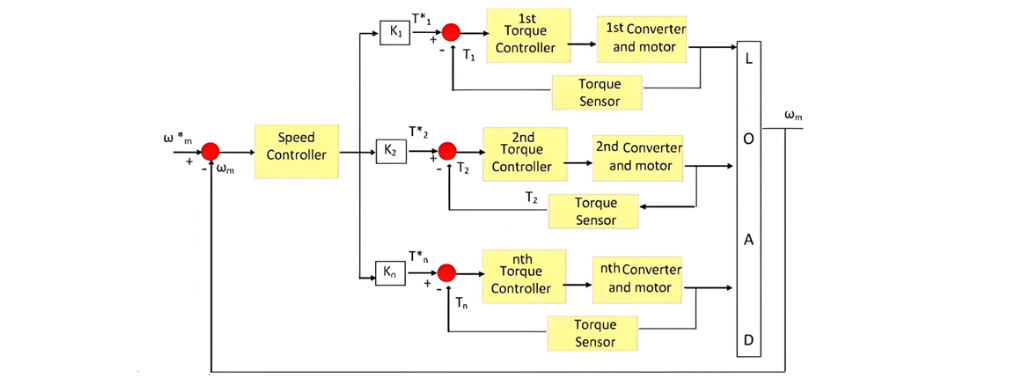Closed Loop Control of Drives
In a closed - loop system, the output of the system is fed back to the input, enabling the system to control the electrical drive and self - adjust its operation. Feedback loops in an electrical drive are incorporated to meet the following critical requirements:
Torque and Speed Enhancement: To boost the torque and speed performance of the system.
Steady - State Accuracy Improvement: To enhance the precision of the system during steady - state operation.
Protection: To safeguard the electrical drive components from potential damage.
The key components of a closed - loop system include the controller, converter, current limiter, and current sensor, among others. The converter plays a crucial role in converting variable frequency power to a fixed frequency and vice versa. The current limiter, on the other hand, functions to prevent the current from exceeding a pre - set maximum value. Below, we will explore the different types of closed - loop configurations.
Current Limit Control
This control scheme is designed to keep the converter and motor currents within a safe range during transient operations. The system features a current feedback loop integrated with a threshold logic circuit.

The logic circuit serves as a safeguard, protecting the system from excessive current. In the event that transient operations cause the current to rise above the pre-set maximum value, the feedback circuit is activated. It promptly takes corrective action, compelling the current to drop back below the maximum threshold. Once the current returns to normal levels, the feedback loop deactivates, resuming its standby state.
Closed-Loop Torque Control
Closed-loop torque control systems are widely employed in battery-powered vehicles, railway applications, and electric trains. The reference torque T^* is determined by the position of the accelerator pedal. The loop controller then works in tandem with the motor to ensure that the actual torque output closely follows the reference value T^*. By adjusting the pressure on the accelerator, the operator can effectively control the speed of the drive system, as the torque output directly influences the acceleration and speed of the vehicle or train.

Closed-Loop Speed Control
The block diagram of the closed - loop speed control system is illustrated in the figure below. This system features a nested control structure, with an inner control loop embedded within an outer speed loop. The primary function of the inner control loop is to regulate the motor current and torque, ensuring they remain within safe operating limits.

Closed - Loop Speed Control
Suppose there is a reference speed ωm∗ that generates a positive speed error Δω*m. This speed error is processed by a speed controller and then fed into a current limiter. Notably, the current limiter can become overloaded even in the presence of a minor speed error. The current limiter then sets the current for the inner current control loop. Subsequently, the drive system initiates acceleration. Once the drive speed matches the desired speed, the motor torque equals the load torque. This equilibrium causes the reference speed to decrease, resulting in a negative speed error.
When the current limiter reaches saturation, the drive enters a braking mode and begins to decelerate. Conversely, when the current limiter becomes desaturated, the drive smoothly transitions from the braking state back to the motoring mode.
Closed - Loop Speed Control of Multi - Motor Drives
In multi - motor drive systems, the overall load is distributed among multiple motors. Each section of the system is equipped with its own motor, which is primarily responsible for carrying the load specific to that section. Although the ratings of the motors vary depending on the type of load they serve, all the motors operate at the same speed. When the torque requirements of each individual motor are met by its respective driving mechanism, the driving shaft only needs to bear a relatively small synchronizing torque, facilitating coordinated operation of the multi - motor setup.

In a locomotive, due to varying degrees of wear and tear, the wheels do not revolve at a uniform speed. As a result, the driving speed of the locomotive fluctuates accordingly. Besides maintaining a consistent speed, it is equally crucial to ensure that torque is evenly distributed among the multiple motors. If this balance is not achieved, one motor may become overloaded while another remains underutilized. This imbalance ultimately leads to a situation where the rated torque of the entire locomotive is significantly lower than the cumulative torque ratings of the individual motors.
The Electricity Encyclopedia is dedicated to accelerating the dissemination and application of electricity knowledge and adding impetus to the development and innovation of the electricity industry.













